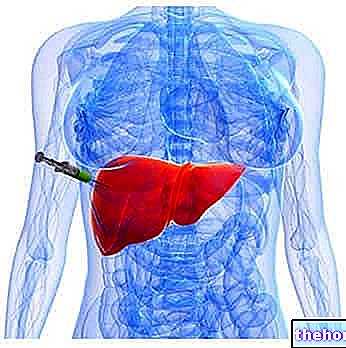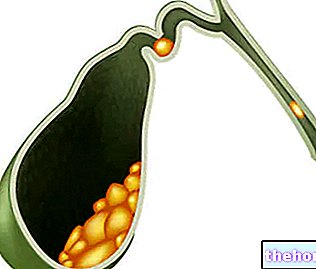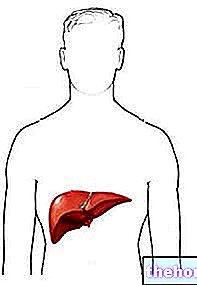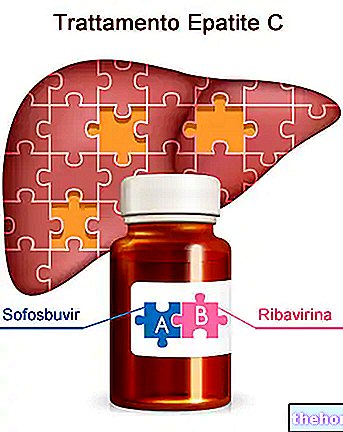What is it and how is it done?
Liver ultrasound is based on the principle of ultrasound. Using this technique, a beam of ultrasounds (so called because they are not audible to the human ear) is projected onto the "body area to be examined, thanks to a" special probe.At this point, the tissues affected by the sound waves reflect them to varying degrees according to their consistency; therefore, by capturing the reflected ultrasounds using the same probe that generated them, and converting them into electrical signals, it is possible to process them electronically to reconstruct the morphology of the tissues and organs studied.
For the above, liver ultrasound is performed to better describe or delineate the architecture of the liver, especially in the presence of symptoms or suspicious clinical tests. It is possible, for example, to evaluate the consistency of the organ and the blood supply, as well as to search for the presence of cysts, abnormal and fibrous formations, and pockets of infection.

Symptoms most commonly associated with liver disease include:
- jaundice (yellowish discoloration of the skin and eye sclerae);
- loss of appetite;
- fatigue, malaise and significant weight loss;
- dark colored urine or light colored stools.
Other symptoms common to various liver diseases are: nausea, vomiting, diarrhea, varicose veins, low blood sugar, low-grade fever, muscle aches and loss of sexual desire.
Pain in the liver, perceived in the center-upper right abdominal region, generally arises only in an advanced phase of the disease process; this symptom is in fact associated with the "volumetric increase" of the organ, especially when it occurs abruptly (acute hepatitis).
Blood tests that investigate liver health include the dosage of:
- enzymes of hepatocyte origin (transaminases - AST, ALT - ALP and GGT); ↑↑↑
- direct and indirect bilirubin (urine dosage is also important) ↑↑↑
- plasma proteins (total amount, albumin and / or globulins) ↓↓↓
- coagulation factors (prothrombin time ↑↑↑) ↓↓↓
Among the risk factors for the development of liver disease we remember:
- alcoholism
- obesity
- presence of metabolic diseases, such as diabetes mellitus
- drug use
- unprotected sexual intercourse
- prolonged drug therapies (including the use of high-dose anabolic steroids)
- intoxications (arsenic, poisonous mushrooms, mycotoxins)
Another classic application of liver ultrasound is the diagnosis of steatosis, a condition characterized by the excessive accumulation of fat in the hepatocytes (so called liver cells). At the same time, during the liver ultrasound it is possible to extend the study also to other abdominal organs, to evaluate, for example, the presence of stones inside the gallbladder or biliary tract, or the state of health of the pancreas. Furthermore, the so-called operative liver ultrasound can be performed for diagnostic or therapeutic purposes, for for example, to guide the needle path during a biopsy, liver drainage or the treatment of liver tumors by radiofrequency hyperthermia or laser.
We have therefore seen how wide the range of indications for liver ultrasound is, while the table on the side shows the symptoms and clinical examinations theoretically worthy of further study by liver ultrasound. What remains quite similar in the various cases is the preparation required by the doctor. in view of the ultrasound examination of the liver.
Liver ultrasound preparation diet
Since the excessive presence of intestinal gas can limit the accuracy of the diagnostic examination, in the two / three days preceding the ultrasound the patient must limit the consumption of all those foods that can cause problems with meteorism and flatulence (such as those rich in fiber and waste). He must therefore refrain from the consumption of legumes (lentils, beans, broad beans, chickpeas, peas), milk and dairy products, vegetables, tubers, grapes, various cheeses, bread and pasta (both allowed with extreme parsimony), wholemeal products and fermented foods. In these days, carbonated drinks will also be avoided, limited nerves (tea, coffee, hot chocolate) and of course abolished the consumption of alcohol. In the "approach to liver ultrasound", on the other hand, the consumption of meat, fish, eggs, peeled fruit (with the exception of grapes), aged cheeses in moderation and still mineral water is allowed.
On the day of the examination, the patient must have been in the clinic on an empty stomach for at least eight hours, during which time he can only drink non-carbonated water.




























